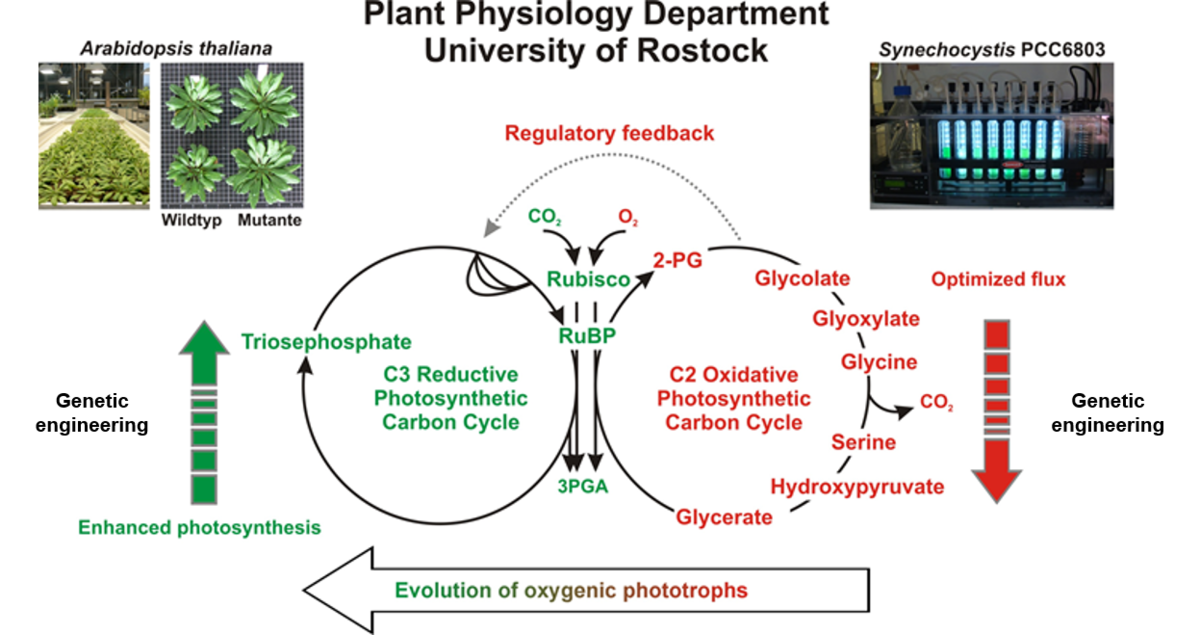Key Research Topics
1. Influence of CO2 partial pressure on primary metabolism
2. Sensing fluctuating CO2 partial pressure
3. Synthetic biology attempts for new CO2-related pathways
4. Molecular mechanisms of salt stress response
5. Stress acclimation of cyanobacteria in the natural environment
6. Influence of DNA methylation
Photosynthesis converts inorganic carbon, mainly CO2, into organic compounds. This process, called primary production, initiates the global carbon cycle and supports the growth of almost all organisms. The CO2 content of the earth atmosphere has been changed, it declined over the past three billion years due to photosynthetic activities of cyanobacteria, algae and plants from high to low CO2 contents, which is recently again increasing due to human activities (approximately 0.04% CO2 of the gas atmosphere). The large decline in the available inorganic carbon was challenging for photosynthetic CO2 assimilation by the Calvin-cycle. This cycle starts with the production of the organic carbon molecule 3-phosphoglycerate (3-PGA) by the carboxylating enzyme Ribulose 1,5-bisphosphate Carboxylase/Oxygenase (RubisCO), which has a low CO2 affinity and catalyzes the oxygenase side reaction in the presence of high amounts of O2 (approximately 20% of the gas atmosphere). The low CO2 affinity of RubisCO is often limiting plant growth, because the present CO2 partial pressure is not saturating the full enzyme activity. The limitation is enhanced due to the oxygenase side reaction of RubisCO, which produces a toxic intermediate 2-phosphoglycolate (2-PG).
During long-term evolution, photosynthetic organisms developed two main strategies to improve the CO2 fixation with RubisCO in the present-day low CO2/high O2 earth atmosphere. Cyanobacteria, most algal groups and C4-plants evolved different inorganic carbon-concentrating mechanisms (CCM), which enhance the level of inorganic carbon by different means in the photosynthetic cells permitting RubisCO to work in a CO2-saturated environment thereby also largely preventing its oxygenase reaction. To deal with the unavoidable production of the toxic intermediate 2-PG, all organisms performing oxygenic photosynthesis use the photorespiratory 2-PG metabolism, which converts two molecules of 2-PG into one molecule of 3-PGA thereby releasing CO2. This CO2 loss considerably diminishes photosynthetic productivity of most crop plants, which put photorespiration in the focus of modern plant breeding. The primary photosynthetic metabolism is not only influenced by the different CO2 partial pressures but also by many other environmental factors. Hence, our work aims to analyze the adaptation and acclimation of the primary photosynthetic metabolism to fluctuating conditions.

